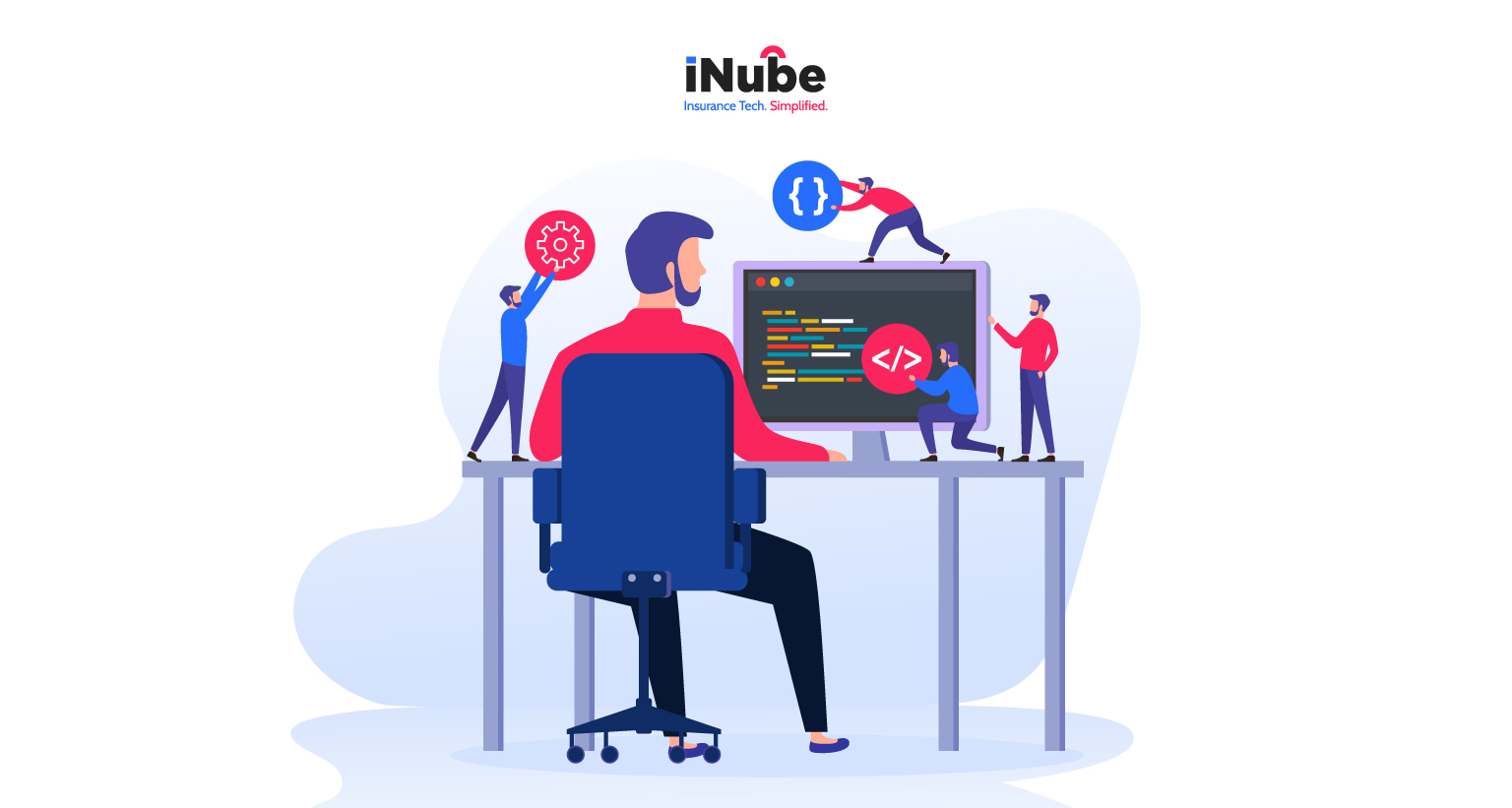In today’s insurance landscape, digital transformation is no longer optional—it’s the minimum requirement. Every insurer is talking about speed, agility, and launching digital journeys. But behind the buzz, many are still relying on general-purpose low-code/no-code (LCNC) platforms that were never meant to handle the complexity of insurance.
So here’s a reality check:
Can your LCNC platform truly keep up if it doesn’t even understand your business?
This article explores why generic LCNC tools can’t get you to true digital maturity—and why domain-specific, insurance-native platforms are becoming the new foundation for competitive advantage.
The Gap Between Going Digital and Being Digital
Let’s begin by separating the illusion from reality.
Many insurers think they’re becoming digital simply because they’ve adopted modern platforms. But the real transformation lies not in the tools alone, but in how intelligently those tools align with the demands of your industry.
If your LCNC platform requires weeks of configuration to understand basic insurance workflows like endorsements, renewals, or reinstatements—then it’s not accelerating you; it’s slowing you down. You’re not gaining agility; you’re trading one form of complexity for another.
Insurers don’t just need visual app builders. They need platforms that are rooted in the language, logic, and lifecycle of insurance.
The Problem with Generic LCNC Platforms
The insurance industry is unlike any other. It’s regulated, interconnected, and data heavy. It operates on trust, compliance, and service consistency across multiple stakeholders. A generic LCNC tool—no matter how flexible—is not equipped to solve this without significant customization.
Let’s break down the pitfalls:
- Customization Overload: Generic platforms force insurers to recreate every rule, workflow, and condition from scratch.
- Disconnect Between Business & IT: Business users struggle to operate tools built without insurance context, while IT spends cycles making the tool “fit.”
- Integration Fragility: Insurance relies on seamless connections to TPAs, eKYC, claims adjudication engines, and payment gateways—none of which are native to generic LCNC tools.
- Governance Gaps: Regulated environments like insurance need rule engines and compliance checks baked in—not added later.
The result? A platform that works on paper, but not on scale.
What Insurance-First LCNC Platforms Do Differently
A purpose-built LCNC platform for insurance doesn’t start from zero. It comes embedded with the industry’s logic, workflows, and ecosystem understanding.
This is what sets them apart:
1. Pre-Configured Workflows for Insurance
From quote-to-issue to endorsements, claims, and renewals—everything is pre-structured to reduce time-to-value. You’re not building a system. You’re configuring a strategy.
2. Embedded Regulatory Logic
With rule engines aligned to IRDAI, NAIC, and regional compliance standards, insurers don’t need to retrofit governance—it’s built-in from the start.
3. Domain-Aware Product Builders
Product managers, underwriters, and operations teams can configure offerings without struggling with abstract “objects” or frameworks. The platform thinks like they do.
4. Ecosystem Integrations Out-of-the-Box
From health ID networks to payment gateways to distributor portals—the integrations are pre-wired. APIs are ready. Data models are insurance-native.
5. Seamless Business-IT Collaboration
Because the platform understands insurance, business users can build directly while IT focuses on scale, security, and governance.
The Cost of Choosing the Wrong Platform
Digital transformation isn’t just about building fast. It’s about building with alignment. And when the platform doesn’t align, you start paying in silent ways:
- Longer time-to-market for products
- Increased IT debt from endless customization
- Frustrated business users who lose faith in tools
- Disengaged partners and distributors
- Inability to respond to regulatory or market changes on time
In contrast, insurance-native LCNC platforms unlock speed without sacrificing control. Innovation without creating rework. And digital maturity without operational risk.
From App Builders to Advantage Builders: What Future-Ready Platforms Unlock
When the platform understands insurance, what you get is not just better technology—you get better outcomes:
- Faster GTM Cycles: Launch new products in weeks, not quarters.
- Reduced TCO: Save on development, integration, and compliance costs.
- Better CX: Enable omnichannel journeys that feel seamless to the customer.
- Empowered Teams: Underwriters and operations can own journeys, not just request them.
- Stronger Compliance: Regulatory logic is embedded, not bolted on.
This is what separates insurers who do digital from those who are digital.
Ask the Hard Question:
Is Your Platform Designed for Insurance—or Just Tolerating It?
Not every platform will be honest about this. But the real question for insurance leaders isn’t whether to adopt LCNC—but which kind.
Because it’s no longer about whether you’ll digitize. That’s inevitable.
It’s about how fast, how sustainably, and how aligned that digitization will be.
In Closing: Fit Matters Just as Much as Function
Low Code No Code isn’t a trend. It’s an operating model for the future. But only when it fits the shape of your business.
Insurers need platforms that understand insurance not as a feature—but as a foundation. Ones that come ready to handle policy structures, underwriting nuances, regulatory complexity, and multi-party operations from day one.
Anything less is just another tool—one that might slow you down, rather than speed you up.
So, before you choose a platform, ask yourself: Is it low code? Or is it insurance-smart low-code?
Because that difference will define whether you lead—or lag—in the next wave of digital transformation.

